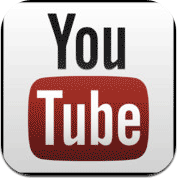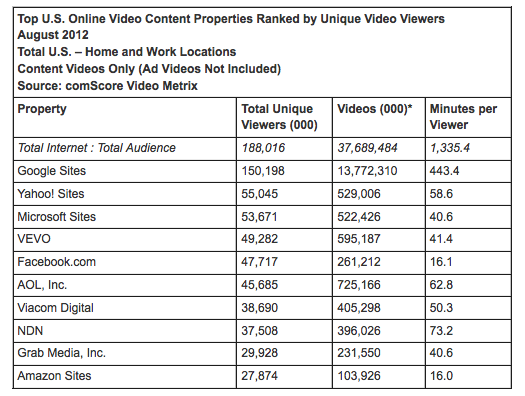YouTube Launches More Original Programming Channels In Europe And Beyond
From the it’s so crazy it just might work department: YouTube launched roughly 100 original content channels a year ago hoping to transform itself from a repository of short-form clips into a bona fide cable TV alternative with all the brand advertising revenue that implies. Today YouTube is announcing an expansion of that effort (60 […]

From local cuisine, health and wellness and parenting to sports, music, comedy, animation and news, this new lineup of original channels will have something for everyone. They are backed by some of the biggest producers, well-known celebrities and emerging media companies from Europe and the U.S.
Google is throwing a lot of programming spaghetti against the refrigerator and hoping that some of it sticks. The person behind the effort is former Netflix executive and YouTube’s Global Head of Content Robert Kyncl. He cites a bunch of “momentum” stats in his blog post announcing the intentional expansion:
- Our top 25 original channels are now averaging over a million views every week
- 800 million of your [sic] are watching 4 billion hours every month, that’s up from 3 billion hours earlier this year
- The number of people subscribing has doubled y/y
- And partners this year are reaching the 100k subscriber mark 5x faster than they were just two years ago
AllThingsD’s Peter Kafka gets into the financial underpinnings of the channels:
YouTube’s new channels deals are roughly similar to the ones they offered last year: Google hands the channel-makers interest-free advances in exchange for exclusive access to their content for a year or more; Google keeps all ad revenue until it clears its advance and shares it with creators after that.
But there are some variations. People familiar with the deals say that Google is likely handing out smaller advances to European programmers, because the video ad market pays out less than in America.
YouTube is the largest single video destination online but engagement is generally less than conventional TV, which still commands more daily consumer time than any other medium. According to comScore just over 87 percent of the online audience watched video in August.
YouTube is part of Google’s Display Network and it’s difficult to know how much money the company is making from the destination alone. Kyncl’s plan is essentially to turn YouTube into a kind of next-gen studio — Netflix and Hulu are also starting to produce original content — in the hope of attracting more brand advertising dollars and boost engagement with the “network.”
In order to really succeed over the long term the company may need to narrow its focus and invest more heavily in a smaller number of shows — as well as promote those shows to ensure people are watching. My sense is that YouTube will do that with any “hits” that may emerge. Give a little money to a lot of people and more money to those shows that manage to build meaningful audiences.
There’s also a question in my mind about the relationship between YouTube and Google Play in the future. Google Play (the former Android Market) offers branded movies and TV shows for rental or purchase; YouTube offers mostly short form content (notwithstanding this initiative) that is ad supported. Will Google Play become a distribution point for successful YouTube shows? Will the two brands remain distinct? Where will Google ultimately place its emphasis when it comes to branded content? And where does Google TV fit it if at all?
Indeed, the emerging world of multi-platform content distribution requires a successful presence on multiple screens: smartphone, tablet, PC and TV. YouTube is still largely associated with the PC although its smartphone and tablet apps are popular.
Finally, it’s difficult to know how “committed” Google is to making original programming for YouTube. The company has a lot of money and can throw lots of money at projects. But Google has also shuttered some high-profile initiatives after they failed to live up to internal expectations. If Google is really serious about making YouTube a brand associated with quality original programming it’s going to need to make an even more “serious” commitment than it has so far.
Contributing authors are invited to create content for MarTech and are chosen for their expertise and contribution to the martech community. Our contributors work under the oversight of the editorial staff and contributions are checked for quality and relevance to our readers. The opinions they express are their own.
Related stories
New on MarTech
